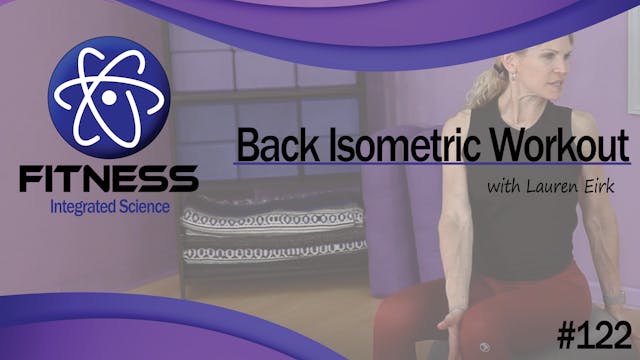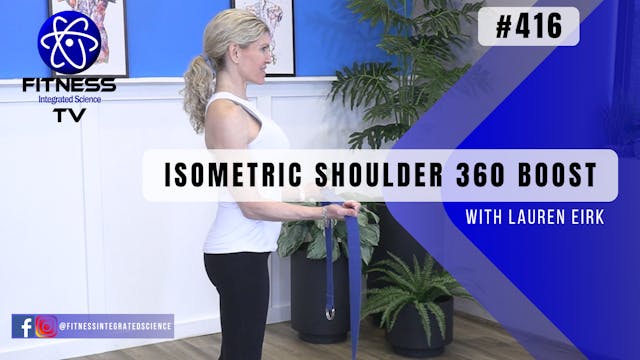Video 381 | Essential Hip and Core Isometrics (45 minutes) with Lauren Eirk
Integrated Isometrics
•
28-Nov-2022
Positional isometric strength training can build strength, improve muscle contractions, lower risk of injury, reduce inflammation, increase bone density, burn fat, and help with mobility.
In this workout, we will use bodyweight, the floor, a sponge ball, and a support to create resistance for the hip and core muscles that are used to hold joints in specific positions. The goal is to improve their ability to contract.
This routine can be done anywhere, anytime. It can reduce fatigue after exercise, as a prevention from injury, and to help manage your muscle strength. This can also be used as a warm-up or as a workout in itself. Isometrics are the precursor to adding any load and challenge to our body.
Purchase Products on Amazon:
Small Pilates Sponge Ball: https://amzn.to/3jaRsE9
Yoga Mat: https://amzn.to/2ZDSMrH
Ballet Singe Barre: https://amzn.to/3h6V7kD
Ballet Double Barre: https://amzn.to/30ntq06
FISTV_Video_40
Up Next in Integrated Isometrics
-
Live Event | Total Body Isometrics (6...
An isometric exercise is a form of exercise involving the static contraction of a muscle without any visible movement in the angle of the joint. They are used for rehabilitation, strength adaptation, hypertrophy, and range of motion training.
In this workout, experience the three main types of...
-
Video 122 | Back Isometric Workout (3...
This thirty minute workout usese the Stability ball as a resistance tool to strengthen muscles of the upper, middle, and lower back muscles. The ball will allow for a variety of joint ranges as well as a ton of support for the spine. The instability of the ball will also enhance the exercises. ...
-
Video 416 | Isometric Shoulder 360 Bo...
The shoulder is a very complex joint. It is the most mobile and the least stable joint in the body. In this workout, we will train many of the cardinal planes of the shoudler. Practice positional isometric strength training to build strength, improve muscle contractions, lower risk of injury, ...




2 Comments